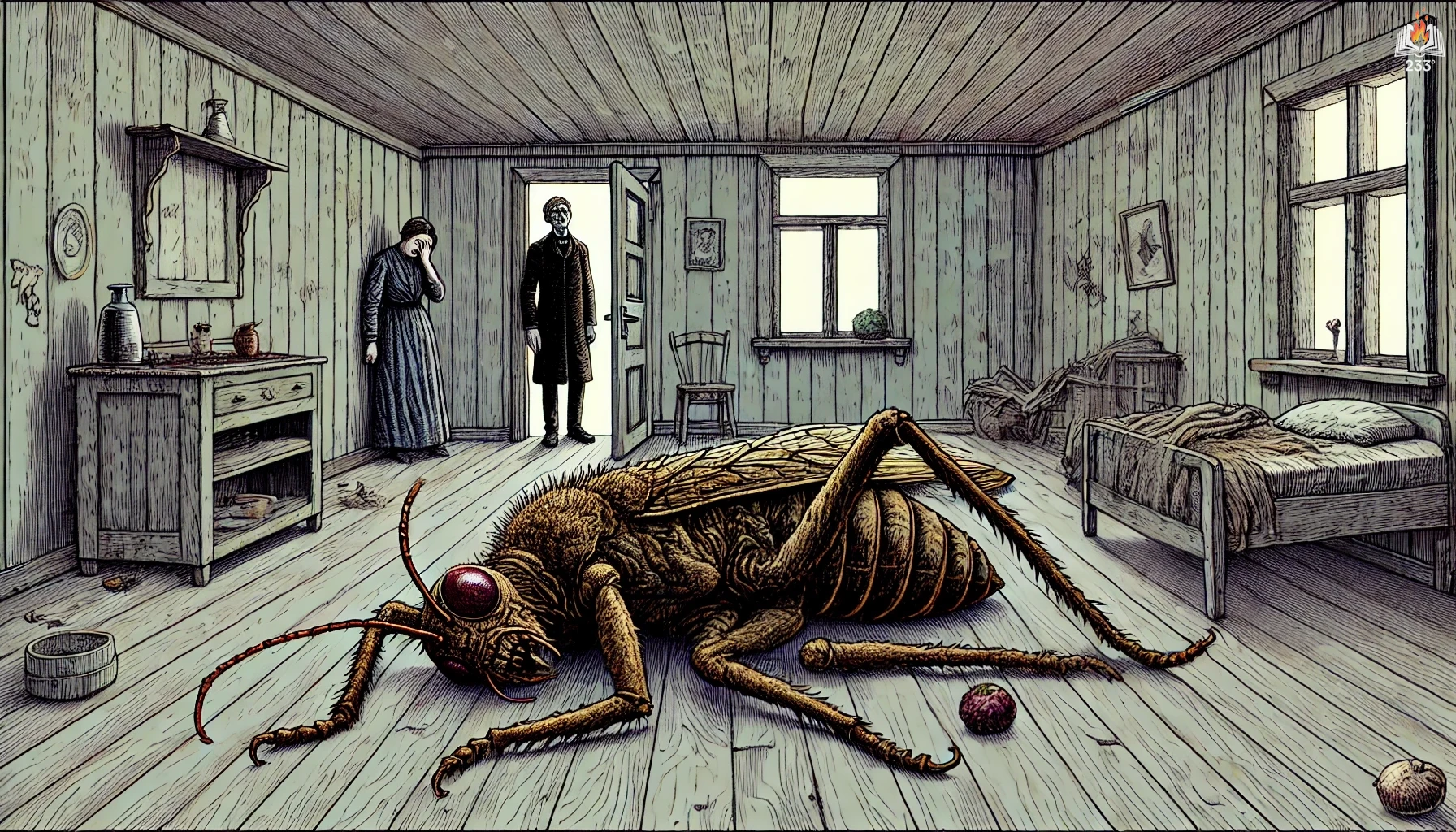Murder in Mesopotamia by Agatha Christie, published in 1936, is part of the legendary Hercule Poirot series and unfolds amid an archaeological dig in the Iraqi desert, where a seemingly fragile and nervous woman, Louise Leidner, becomes the focal point of a chilling murder mystery.
Plot Summary
In the heat and dust of an Iraqi dig at Tell Yarimjah, the members of an archaeological expedition toiled under the sharp sun. It was a place of ancient whispers and crumbling walls, but it was the living, not the dead, who would soon command the most dreadful attention.
Nurse Amy Leatheran arrived with a sense of professional curiosity, hired to care for Mrs. Louise Leidner, the delicate and nervy wife of the expedition leader, Dr. Eric Leidner. Louise was a woman of rare and startling beauty, with fragile bones, violet eyes, and a haunted air that clung to her like perfume. Around her swirled an uneasy household, a blend of scholars, laborers, and foreigners who worked together by day but eyed one another warily by night.
There was Richard Carey, the architect, whose sharp, bronzed features masked a quiet suffering; Miss Johnson, the capable, unflappable archaeologist; the Mercado couple, a sour, watchful pair whose marriage bristled with tension; and young Bill Coleman, with his cheerful chatter, lightening the heavy mood. Father Lavigny, with his keen, dark eyes, presided over the deciphering of ancient tablets, while Joseph Mercado lost himself in his chemicals and curiosities.
Dr. Leidner, for all his gentle manner, was consumed by worry for his wife. Louise, once married to a soldier believed lost in the war, had been living in increasing dread. Strange happenings plagued her – tapping on her window at night, glimpses of a face outside, letters in a familiar hand, the sense of being watched. Though the house was a fortress of mud brick, encircled by the wild landscape, Louise felt no peace. Her husband tried to dismiss her fears as nerves, but the word she used struck a deeper note: she wished to feel safer.
The tension within the expedition ripened like fruit left too long in the sun. Even Nurse Leatheran, practical and steady, sensed it pressing in from every side. The house, built around a courtyard with barred windows and narrow staircases, became a stage for whispered conversations and uneasy glances. Everyone seemed to pass the butter too politely, speak too carefully, and nurse their own small resentments.
One night, as the desert wind slipped around the walls, Louise was found dead in her room. A blow to the head, swift and brutal. The door had been locked from the inside, the barred window offered no escape, and none claimed to have seen or heard a thing. Shock gave way to suspicion. There were too many motives, too many secrets, and no one untouched by the shadow of doubt.
Into this gathering storm came Hercule Poirot, summoned from Baghdad. With his neat appearance, sharp gaze, and meticulous manners, Poirot slipped into the heart of the camp like a surgeon with a scalpel. He listened, watched, and gently peeled back the layers of grief and fear.
Carey, the man with the death’s head face, had long harbored love for Louise, though he buried it under cool restraint. Miss Johnson, all brusque competence, nursed a quiet envy, watching the storm Louise stirred in the hearts of men. The Mercados were another knot of unease – Joseph absorbed in his work, while Marie fumed with jealousy over her husband’s occasional attentions to Louise. Coleman, full of jokes, seemed harmless but skittish. Father Lavigny moved in the background, shrewd and silent, noting all.
Poirot’s small questions uncovered a history dark with menace. Louise’s first husband, a soldier named Frederick Bosner, had not died in war as everyone believed. Court-martialed and imprisoned, he escaped and vanished, leaving behind a wife who remarried only after years of silence. But then the letters came, threatening, bitter, warning Louise she would never be safe. She had lived with this knowledge, half-terrified, half-thrilled, drawing the attention of all those around her even as her world tightened into fear.
The question remained: how could the murderer have struck inside a locked room? Poirot paced the courtyard, gazed up at the parapet, measured the distances between windows, and watched the expedition continue its work as though the past were not still bleeding into the present.
Miss Johnson, sorting through the archaeological records, began to suspect something, and in the quiet of her room one night, she was struck down. Again, silence and darkness were the murderer’s allies. Poirot worked quickly, drawing the threads together. He examined the roof, the courtyard, the barred windows, and the patterns of movement on the day of the murder.
It was Dr. Leidner himself who had been most blind. Poirot revealed the astonishing truth: the murderer was none other than Louise’s first husband, Frederick Bosner, living under their roof all along. Disguised as Father Lavigny, Bosner had worked beside them, hiding in plain sight, his French accent a mask, his robes a shield. His long-cherished hatred had found its moment, and he had crept across the roof, slipped through Louise’s window by removing a loosened bar, and ended the life of the woman he could not forgive.
Miss Johnson had paid with her life for seeing too much – she had noticed the faint scrape marks on the window, the subtle irregularities, and it had cost her dearly.
With quiet efficiency, Poirot set a trap, confronting Bosner with the weight of his guilt. The man’s collapse was swift, the unraveling of his disguise as thorough as the unmasking of his rage. In the courtyard, where ancient walls spoke of older violences, the modern echo came to an end.
The expedition, battered but breathing again, carried on. Dr. Leidner, broken by the double loss of wife and illusion, faced the desert with a haunted gaze. Carey returned to his work, the fire in him banked but still burning. Nurse Leatheran, her duties done, left the sun-drenched, sorrow-stained place behind, carrying with her the memory of a beautiful, frightened woman and the tragedy that had claimed her.
Above the dig, the sky stretched vast and indifferent, the past and present folded into its blue, and the wind swept over Tell Yarimjah, whispering of love, betrayal, and the fatal weight of secrets.
Main Characters
- Hercule Poirot: The meticulous Belgian detective, famous for his “little grey cells,” whose calm, analytical mind cuts through the fog of suspicion. With sharp observation and quiet charm, Poirot unravels the web of deception at the heart of the expedition, exposing hidden truths and restoring order where chaos threatened to reign.
Nurse Amy Leatheran: The practical, sharp-witted English nurse who is hired to care for Mrs. Leidner. Amy’s common sense and keen observations provide a grounded perspective on the unfolding drama, and her role as narrator gives readers an intimate lens on both the setting and the characters.
Louise Leidner: A captivating and enigmatic woman with an air of fragility, Louise draws both fascination and resentment. Her past is clouded with loss, and she is haunted by mysterious fears, making her both a sympathetic figure and the unsettling center of the group’s tensions.
Dr. Eric Leidner: An American archaeologist, gentle and deeply devoted to his wife Louise, yet somewhat helpless in the face of her growing fears. His anxious love and distracted scholarly nature make him a quietly tragic figure.
Richard Carey: The brooding and intense architect of the dig, whose sharp intellect and dark charisma conceal deep emotional turmoil. Carey is drawn into the emotional chaos surrounding Louise, intensifying the atmosphere of suspicion.
Mrs. Mercado: A young and resentful woman, suspicious and envious of Louise’s allure. Her brittle demeanor and hidden jealousy add layers of tension to the expedition’s social fabric.
Joseph Mercado: Mrs. Mercado’s melancholic and distracted husband, absorbed in his laboratory work. His detachment masks deeper undercurrents in both his marriage and his interactions with the group.
Father Lavigny: A scholarly French cleric, sharp-eyed and observant, whose presence brings both intellectual curiosity and an outsider’s insight into the tensions simmering in the expedition.
Bill Coleman: A jovial and somewhat bumbling young man, providing humor and lightness. His cheerful demeanor contrasts sharply with the undercurrent of menace.
Miss Johnson: A seasoned and competent archaeologist, matter-of-fact and plainspoken. She provides a stabilizing force in the group, though even she is not immune to the collective unease.
Theme
Isolation and Suspicion: The isolated dig site becomes a pressure cooker where buried tensions surface, and suspicion infects even the closest relationships. This setting amplifies the characters’ personal insecurities and hidden motives.
Jealousy and Desire: Desire swirls around Louise, creating jealousy that simmers among the expedition members. Christie explores the corrosive power of envy, both romantic and social, and how it can push people toward cruelty.
The Fragility of Appearances: Beneath the surface charm and intellect of the characters lie fears, secrets, and resentments. The motif of things not being what they seem—whether in personal character or material clues—drives the mystery forward.
The Clash of Rationality and Emotion: The archaeologists seek reason and scientific truth in the past, yet they are blindsided by the raw, emotional reality of Louise’s fears and the eventual murder. Christie explores how logic falters when confronted with human passion.
Writing Style and Tone
Agatha Christie’s prose here is brisk, accessible, and tinged with dry humor. By using Nurse Leatheran as narrator, Christie injects a no-nonsense, commonsense perspective into an exotic and emotionally charged setting, balancing suspense with moments of wit and warmth. Leatheran’s voice is conversational and peppered with keen observations, giving readers both intimacy and distance as they follow the investigation.
The tone fluctuates between the lighthearted banter of a group thrown together in close quarters and a growing sense of claustrophobia and menace. Christie expertly builds an atmosphere of simmering tension, using small details—glances, gestures, whispered comments—to evoke unease. Her mastery lies in the slow tightening of suspense, where the murder seems less like a single event and more like an inevitable eruption from a simmering volcano of human weakness.
We hope this summary has sparked your interest and would appreciate you following Celsius 233 on social media:
There’s a treasure trove of other fascinating book summaries waiting for you. Check out our collection of stories that inspire, thrill, and provoke thought, just like this one by checking out the Book Shelf or the Library
Remember, while our summaries capture the essence, they can never replace the full experience of reading the book. If this summary intrigued you, consider diving into the complete story – buy the book and immerse yourself in the author’s original work.
If you want to request a book summary, click here.
When Saurabh is not working/watching football/reading books/traveling, you can reach him via Twitter/X, LinkedIn, or Threads
Restart reading!








